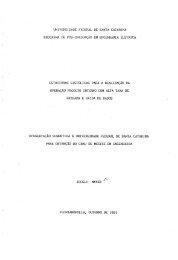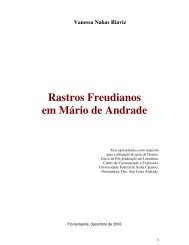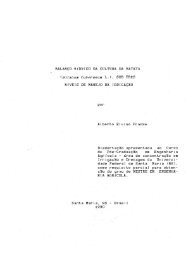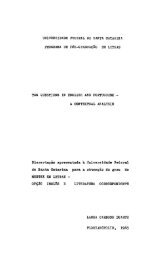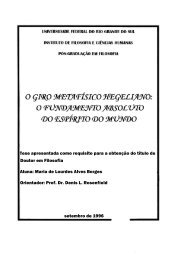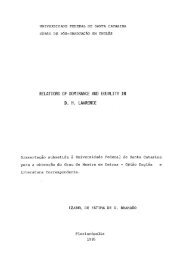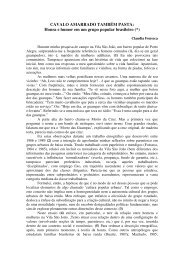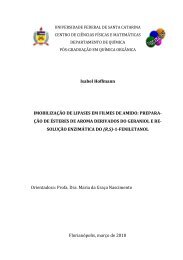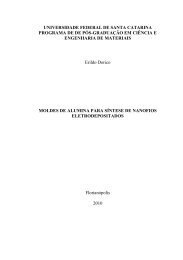T H E S I S
T H E S I S
T H E S I S
You also want an ePaper? Increase the reach of your titles
YUMPU automatically turns print PDFs into web optimized ePapers that Google loves.
68<br />
natural beauty* In fact, he is killed by the mechanical ”thing”,<br />
that is, the "horror”, the squalor of the mechanical world that<br />
Mellors abominates too. He says:<br />
“I'd wipe the machines off the face of the earth again,<br />
and end the industrial epoch absolutely, like a black mistake."<br />
(LCL 230)<br />
Mellors cannot really fight the mechanical ”thing” either, but<br />
he does not have to die, he remains as a symbols the keeper of<br />
natural life. He is also the symbolic bearer of the ”phallic<br />
consciousness”, which is going to save civilization from the<br />
“thing”.<br />
But like Lawrence he cannot prevent his lyric Eastwood-<br />
Tevershall in the novel - from being degraded by the machine «■<br />
The following long passage purports not only to show the<br />
ugly and dark face of industrialism in LCL? contrasting with that<br />
passage from The Whits Peacock (pp. 26-27) about the green hills<br />
and woods of Eastwood (Nethermere), but also offers the opportunity<br />
to compare the early, rural, idealistic style of The White<br />
Peacock with Lawrence’s highly elaborate and seemingly hopeless ,<br />
lament against industrial civilization. Thus the later novels<br />
“The car ploughed up hill through the long squalid straggle of<br />
Tevershall, the blackened brick dwellings, the black slate<br />
roofs, glistening their sharp edges, the mud black with<br />
coal-dust, the pavements wet and black. It was as if dismalness<br />
had soaked through and through everything. The<br />
utter negation of the gladness of life, the utter negation<br />
of natural beauty, the utter absence of the instinct for<br />
shapely beauty which every bird and beast has, the utter<br />
death of human intuitive faculty was appalling.<br />
♦•t<br />
The Wesleyan chapel, higher up, was of blackened brick and<br />
stood behind iron railings and blackened shrubs. The Congregational<br />
chapel, which thought itself superior, was



